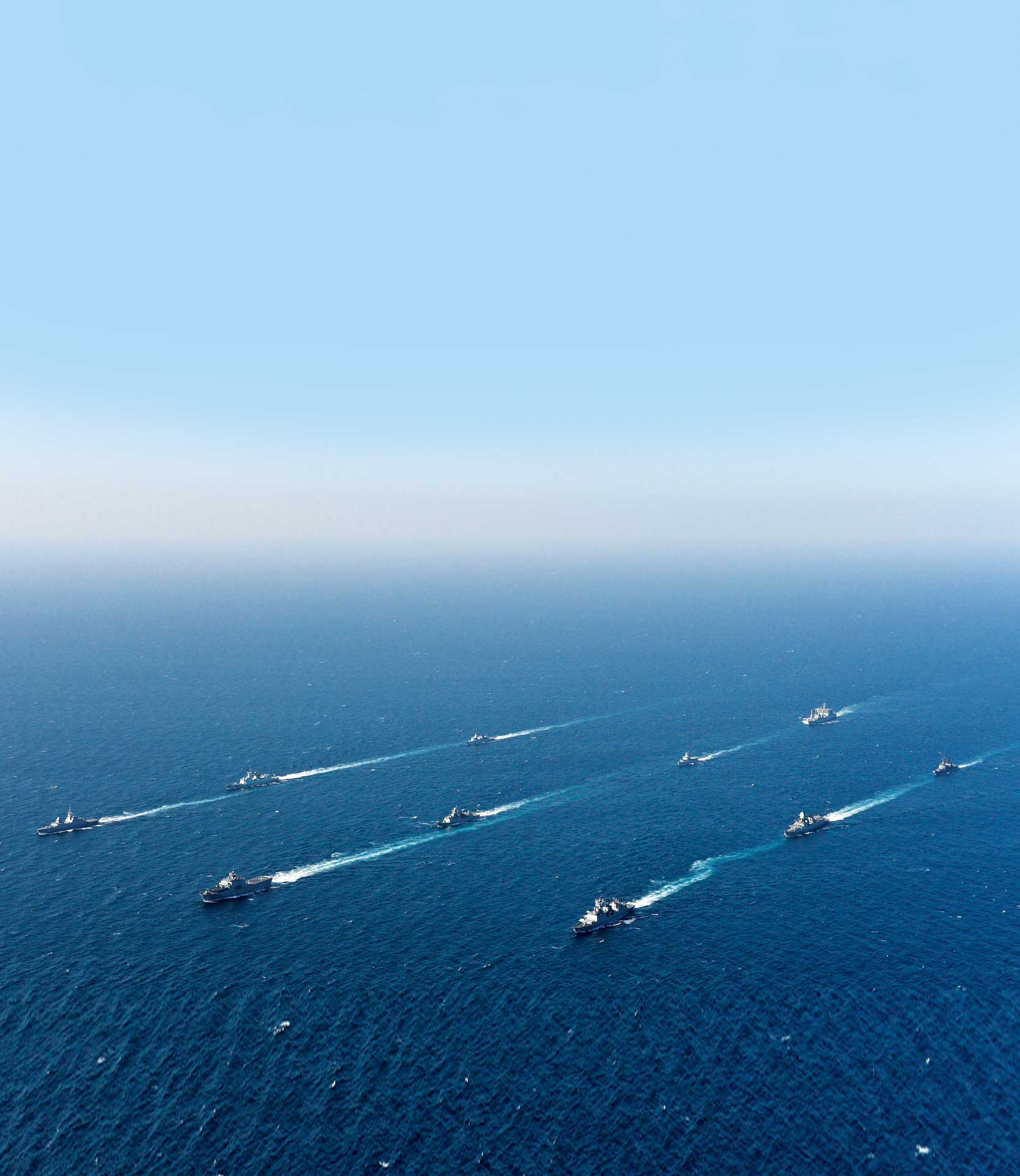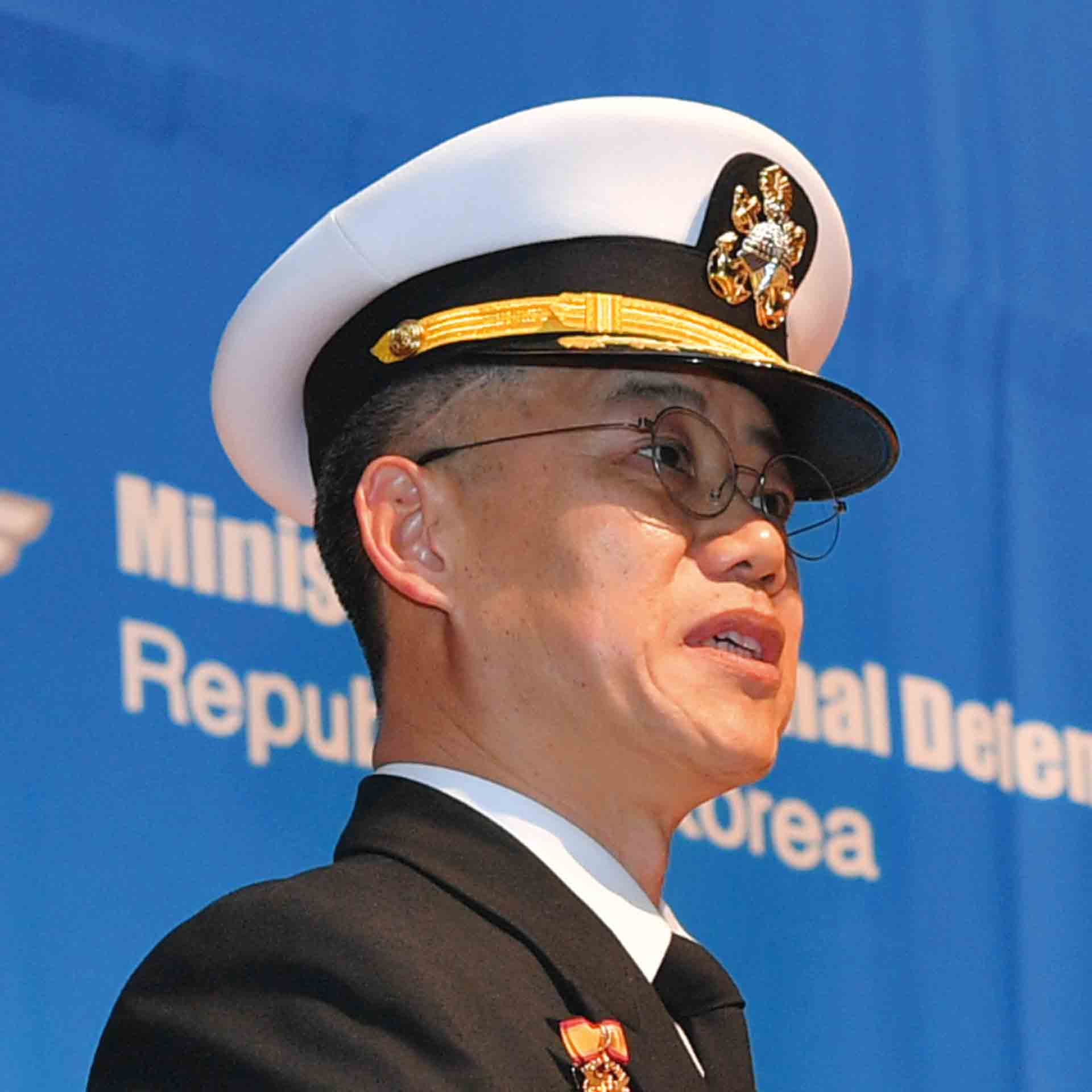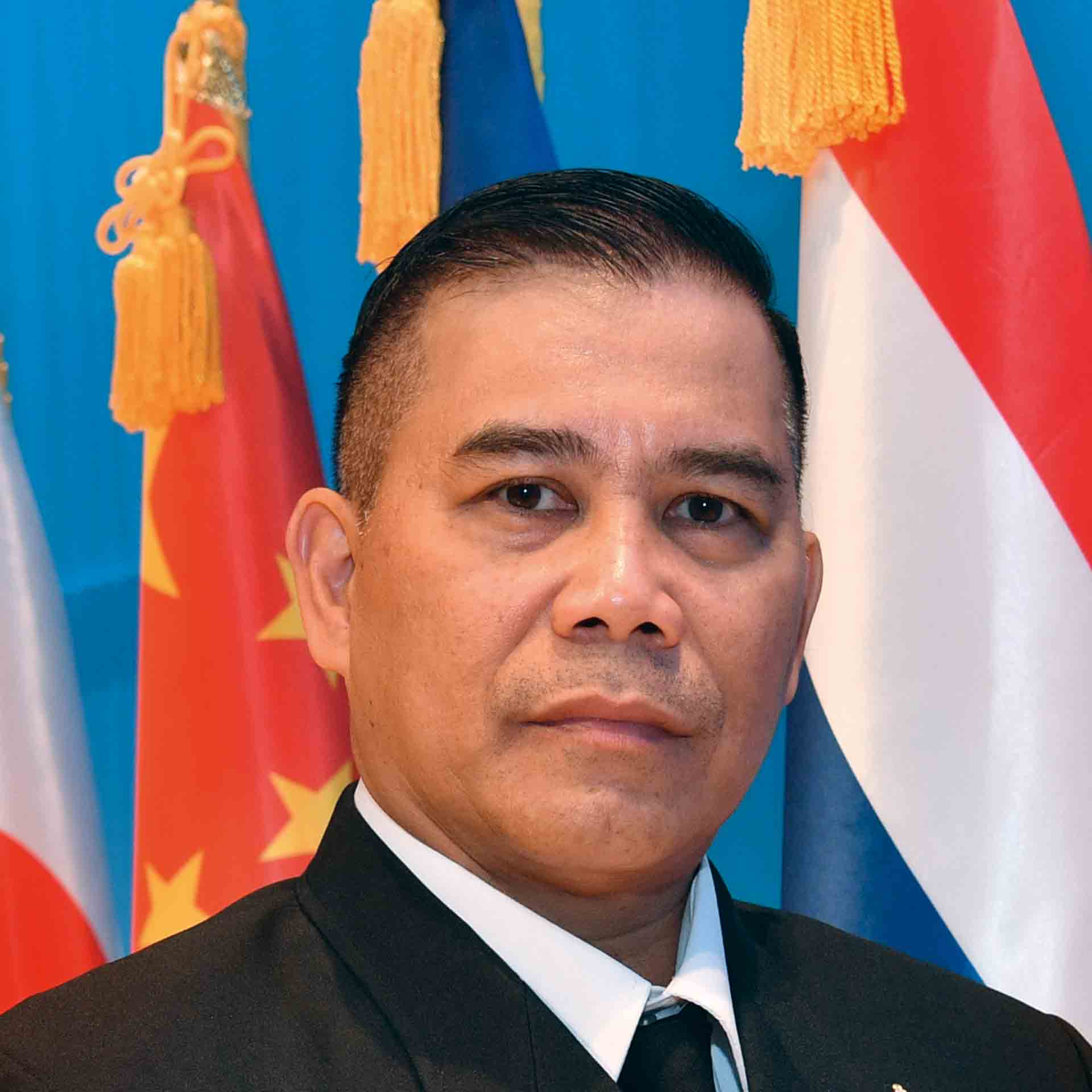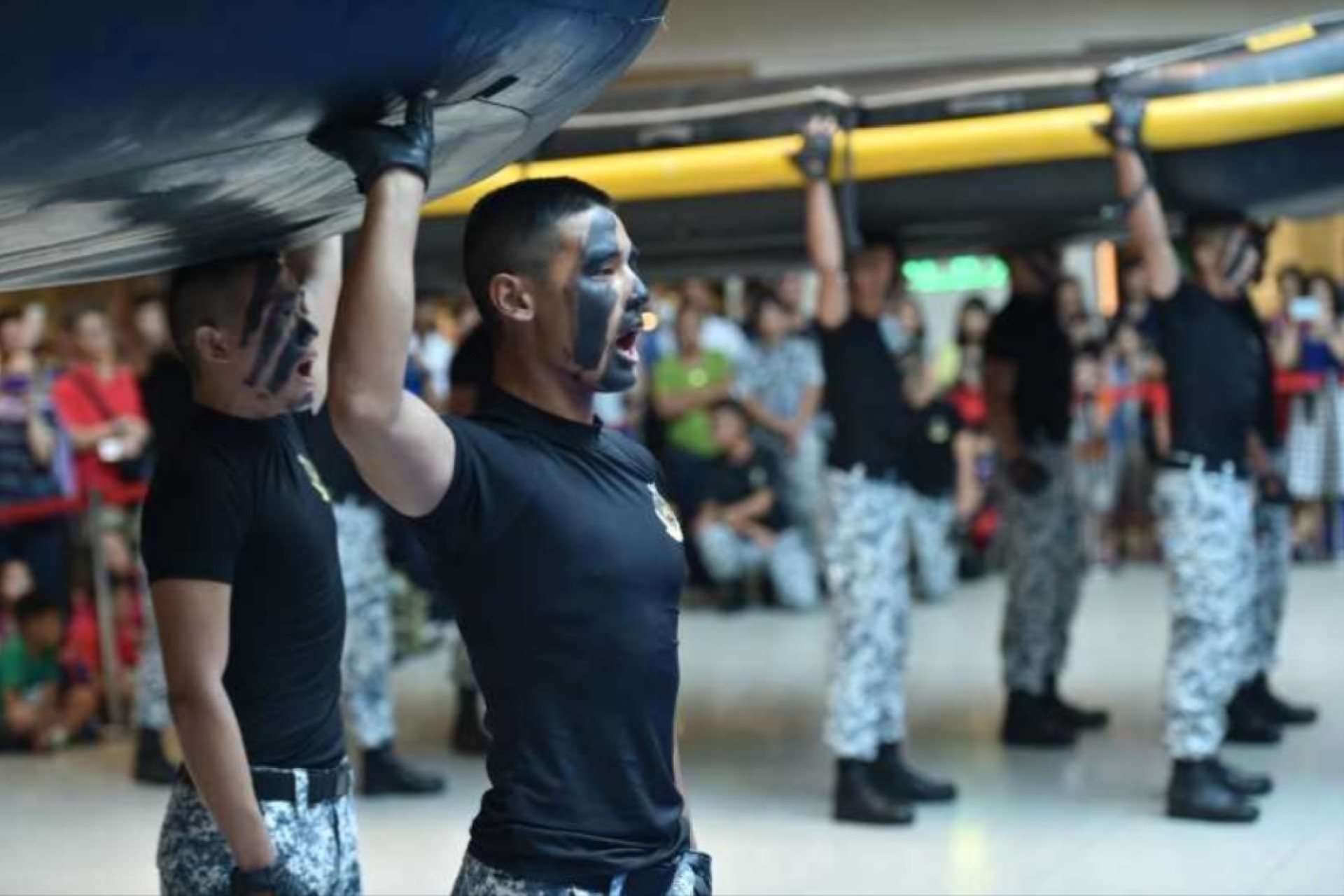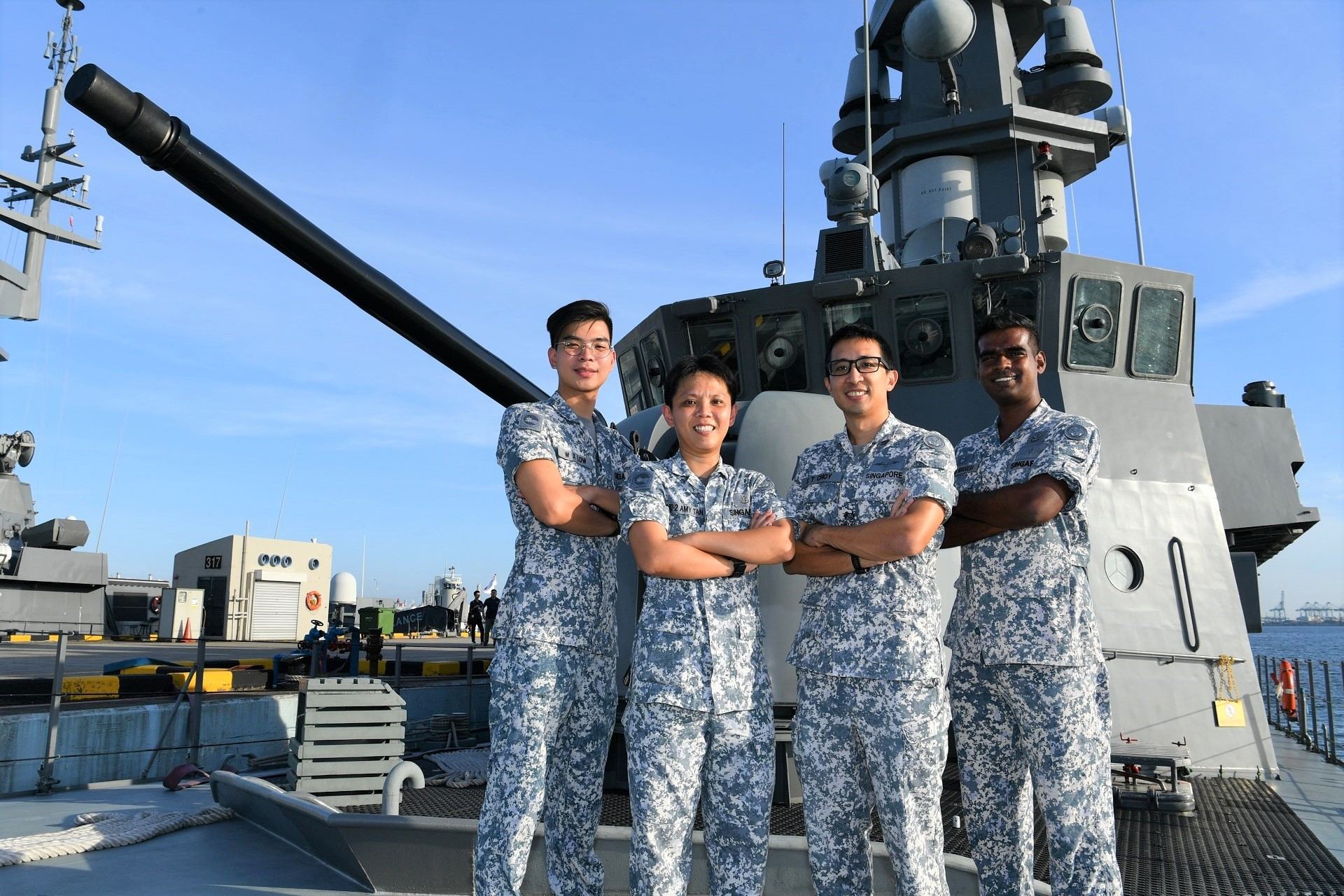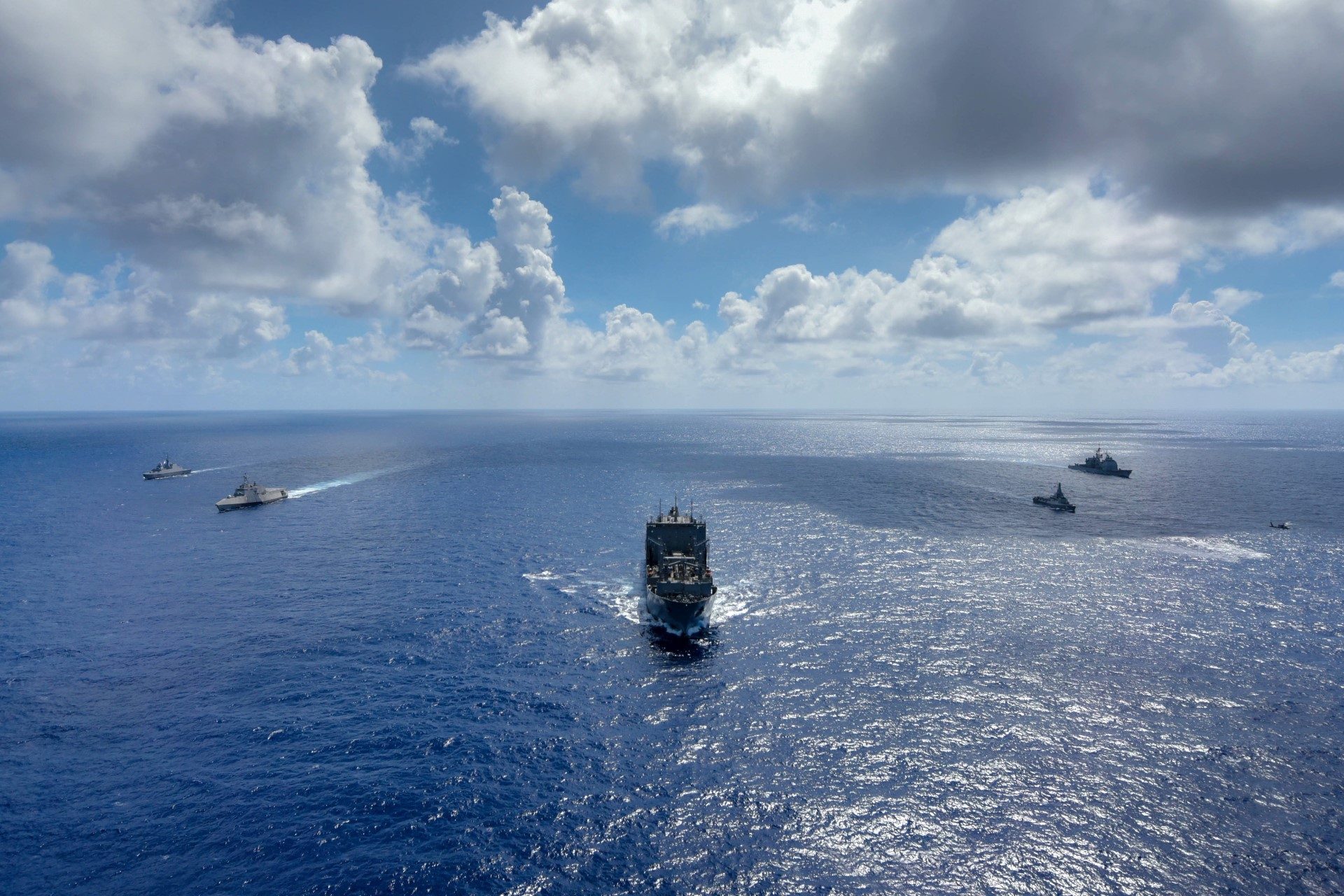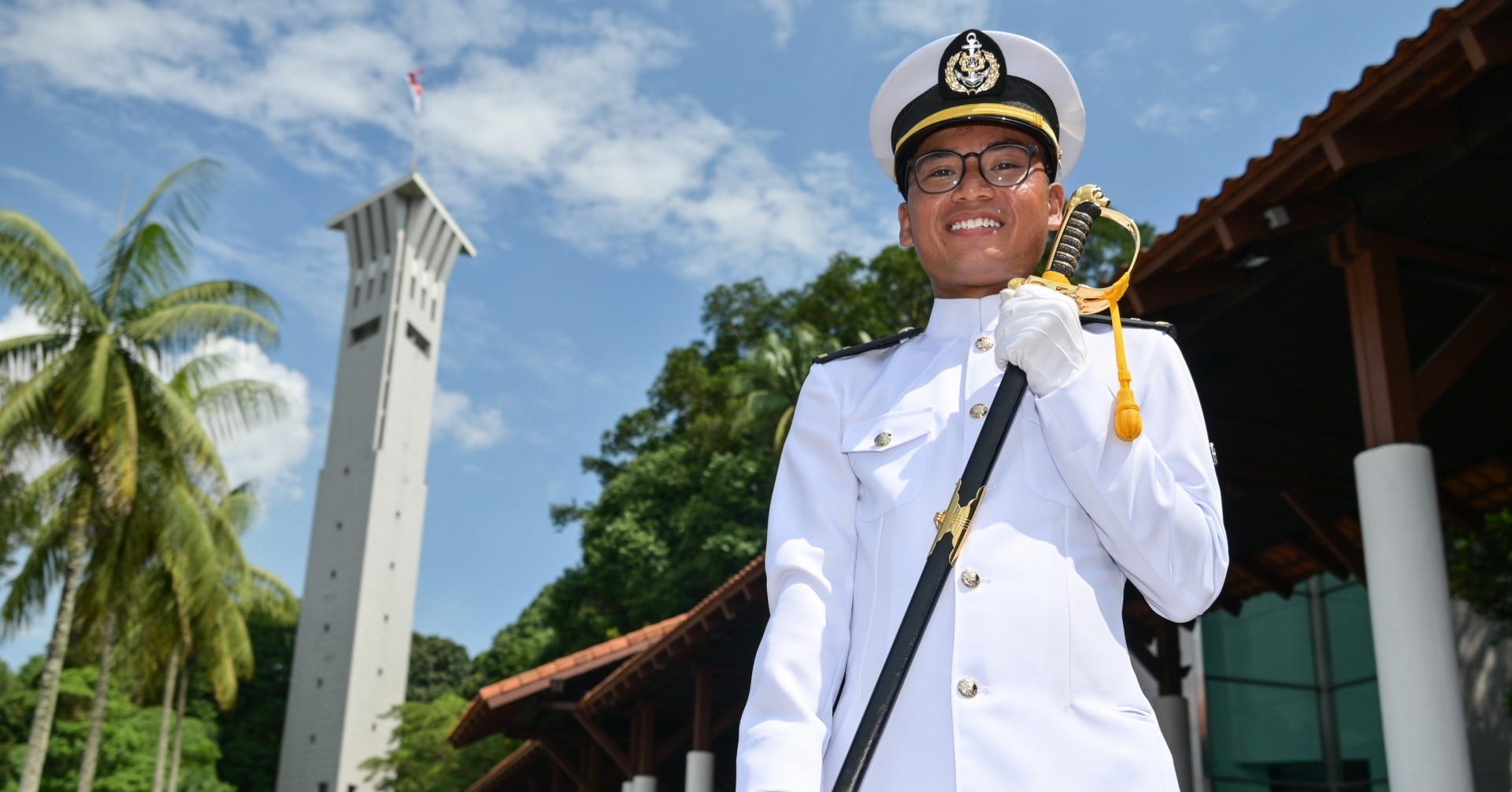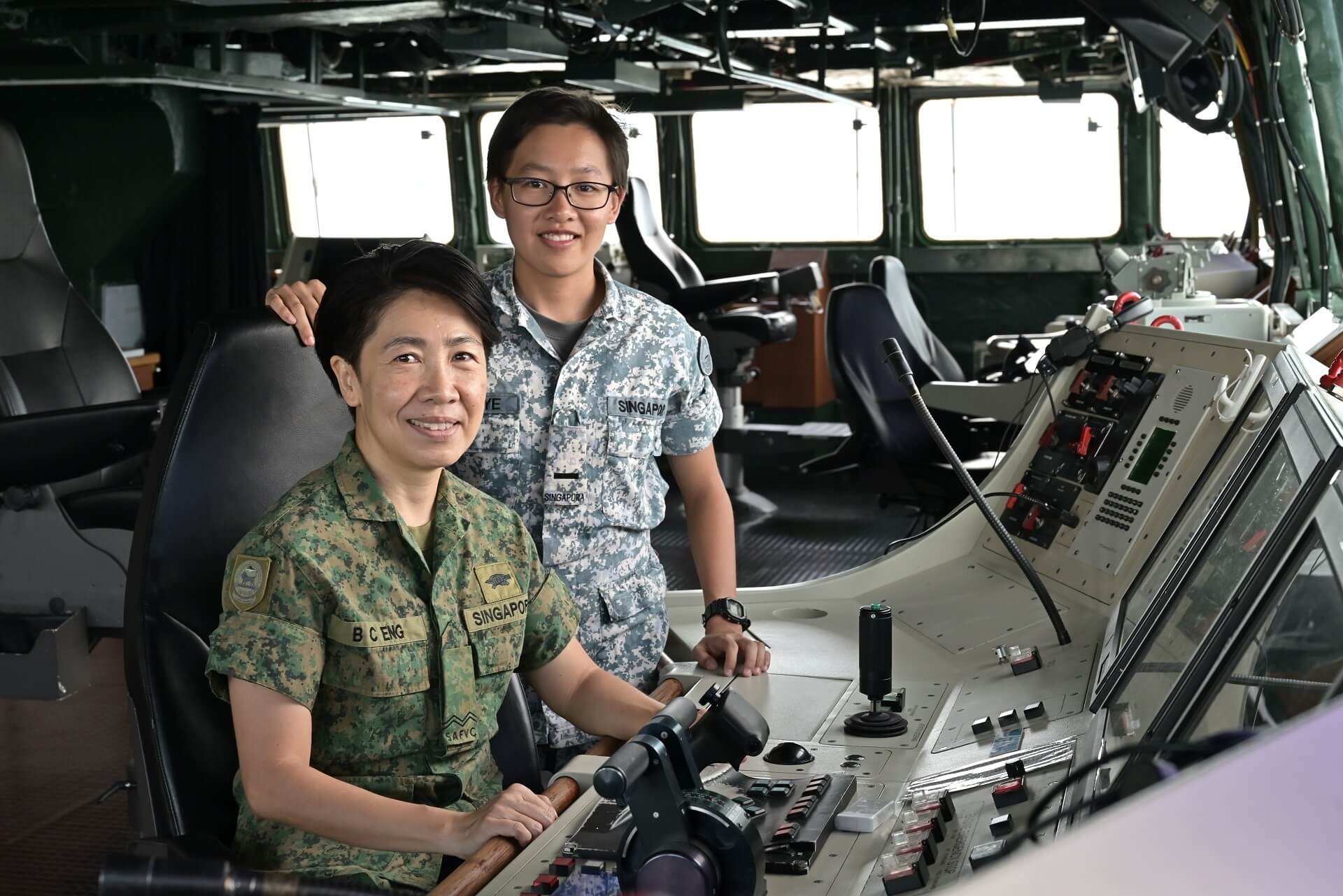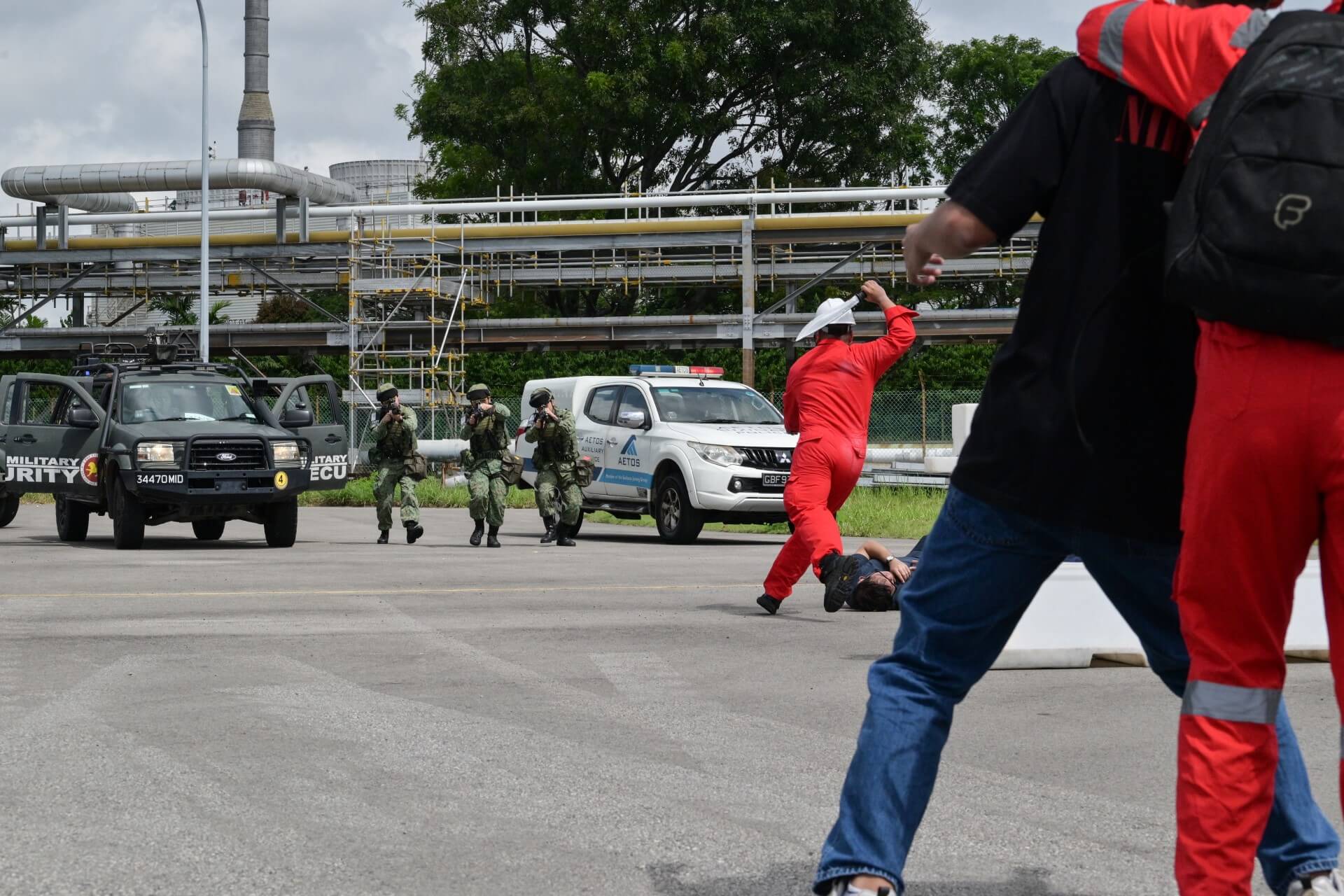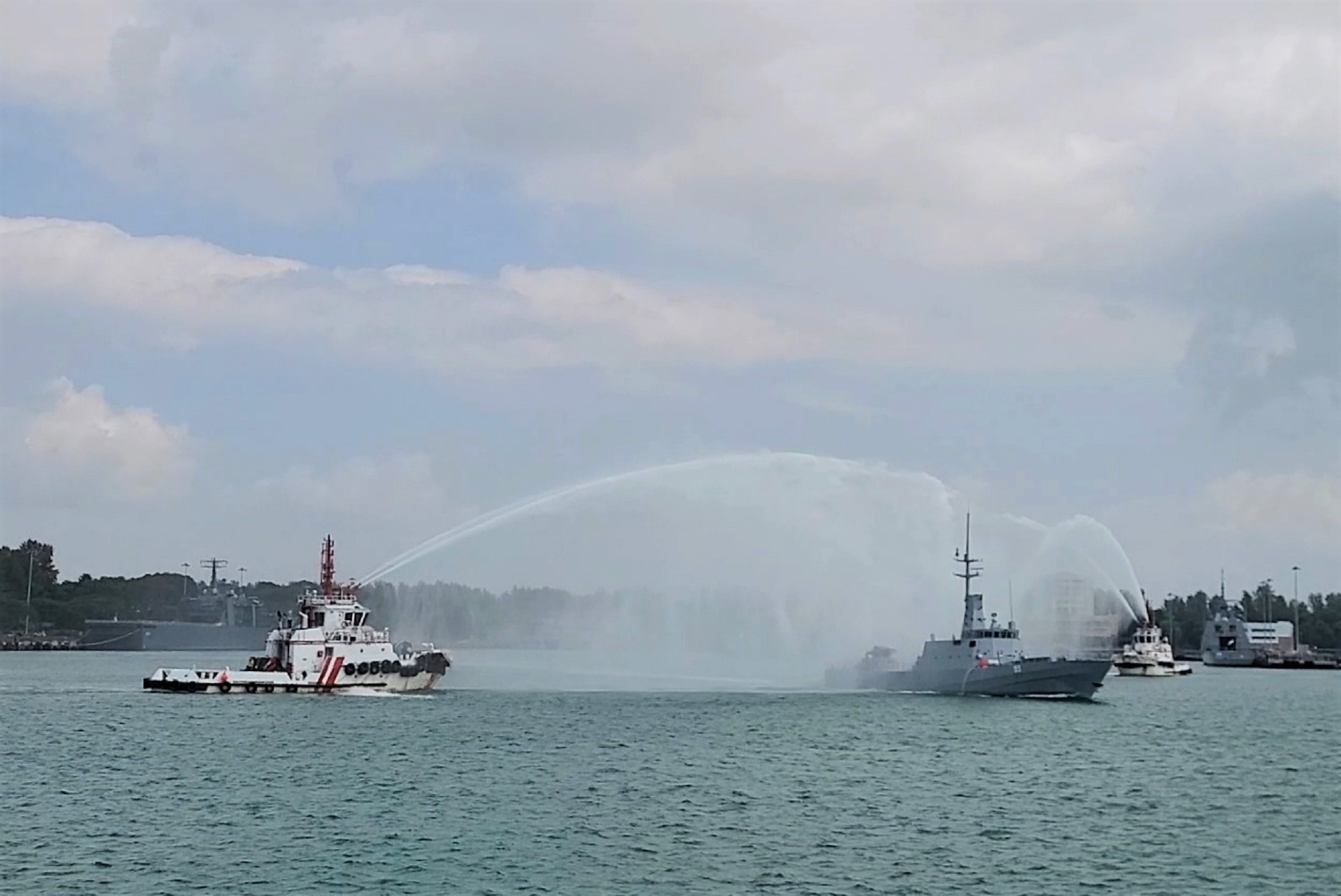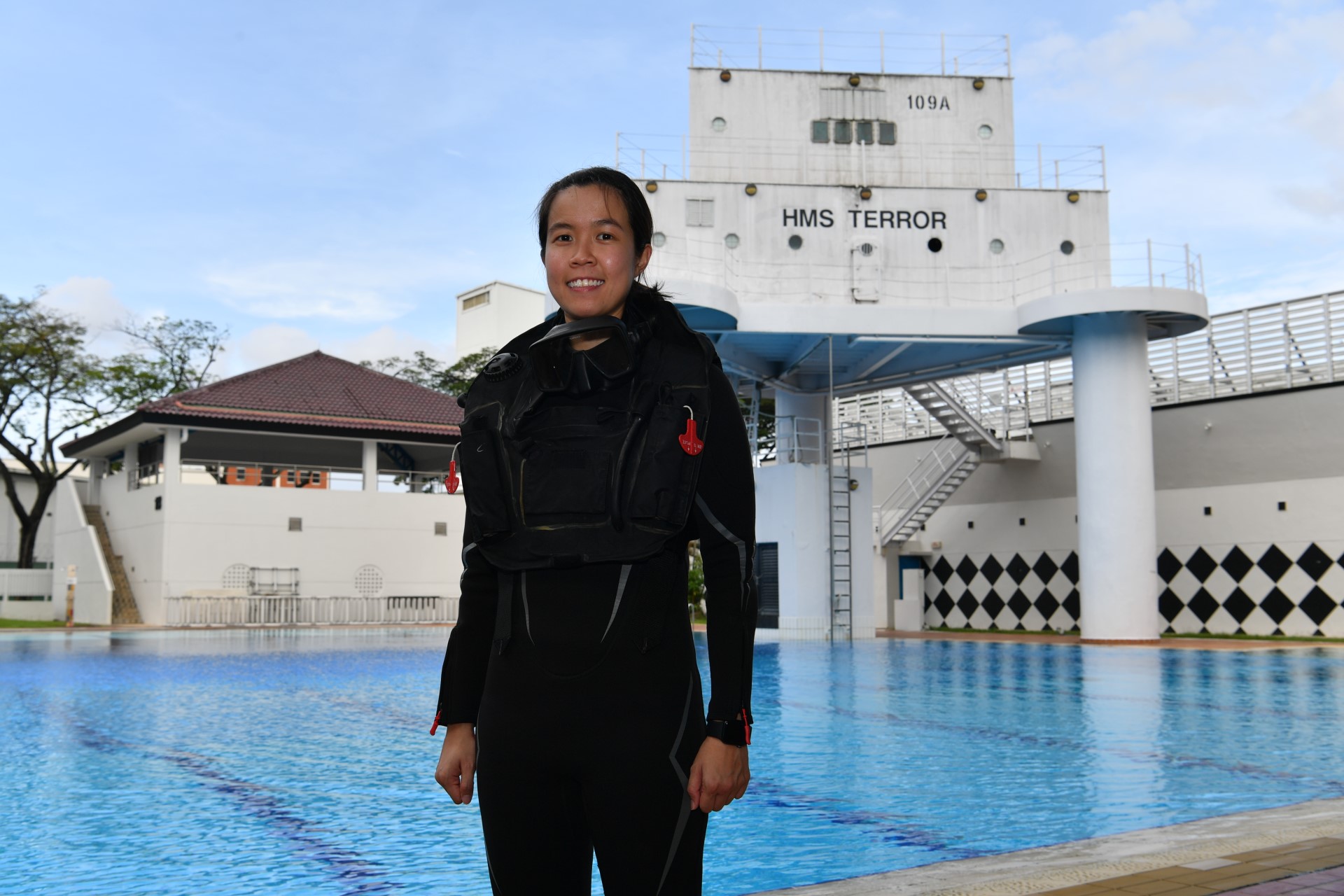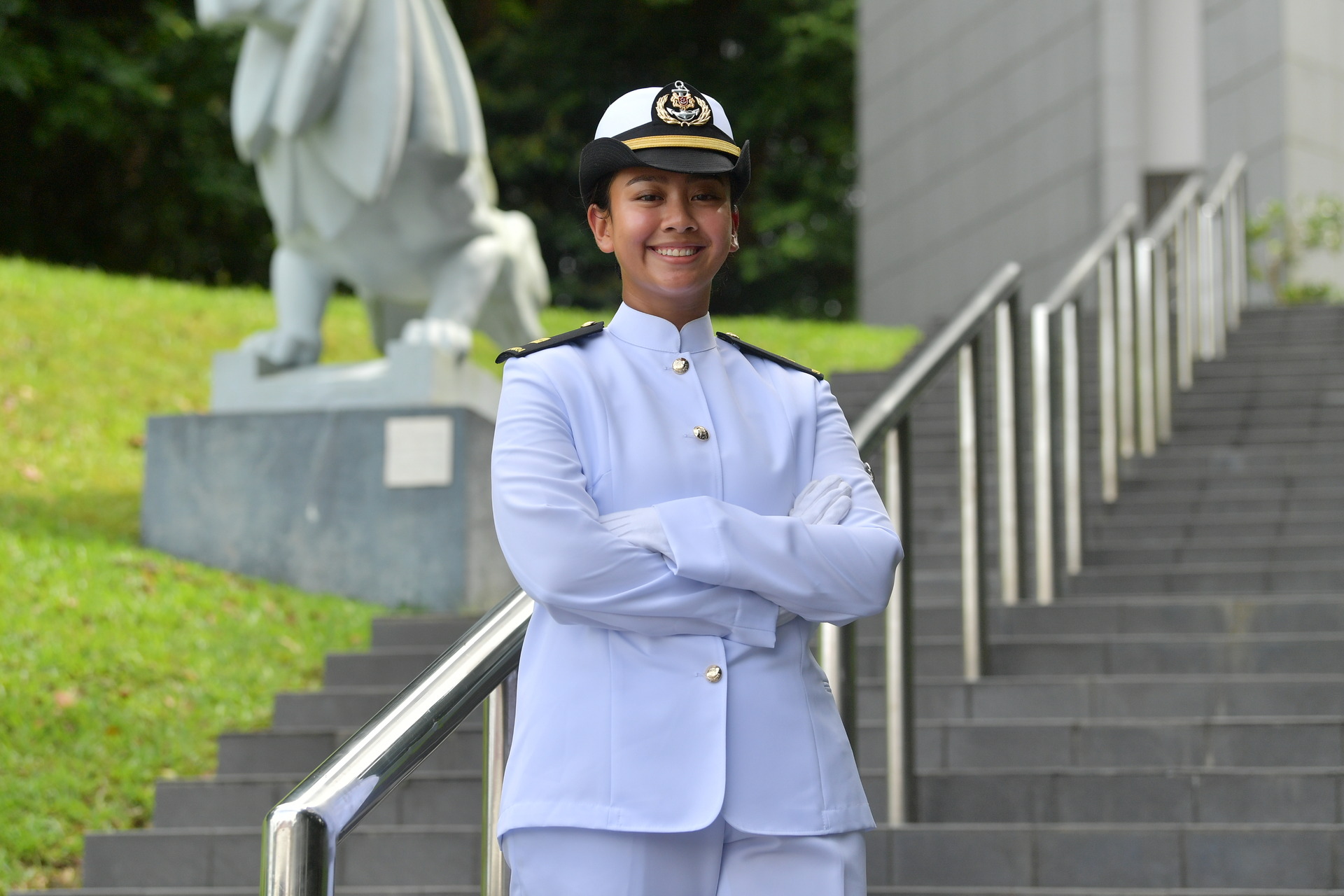A united maritime front
How can countries cooperate to keep our waterways safe and open? Navies from 18 ASEAN Defence Ministers’ Meeting (ADMM)-Plus nations spent two weeks working together to test their responses in a maritime security crisis.// STORY Benita Teo
// photos PIONEER photographers & courtesy of ROKN & SAF Film Unit
Imagine that you are the captain of a merchant ship. You're travelling near the Republic of Korea (ROK), making your way to the next port of call.
Suddenly, you are flanked by two small boats that have been trailing you at high speed. They stop alongside your ship and the boatmen forcefully climb on board.
Armed with dangerous weapons and explosives, they hold your crew hostage and threaten to blow up the ship while looting it for cash and valuables.
This is every merchant ship's greatest fear.
Then, from the horizon, you spot a tiny grey mass. More appear, and you realise that they are warships — each bearing the flag of a different country from around the region.
These warships had received your distress call through the Information Fusion Centre (IFC), and quickly moved in to contain the situation. They form a cordon around your ship.
Landing via helicopter, troops from the ROK Navy (ROKN) Underwater Demolition Team (UDT) storm the bridge. At the same time, the Republic of Singapore Navy's (RSN's) Formidable-class frigate, RSS Stalwart, sends out a boarding team to support the mission and secure the ship's engine room.
With the quick-acting and cooperative efforts of the many nations, the gunmen are finally apprehended and the crew returned to safety.
This was not an actual maritime security incident, but one of various realistic scenarios put to the test during this year's ASEAN Defence Ministers' Meeting (ADMM)-Plus Maritime Security Field Training Exercise (MS FTX).
All hands on deck
Held from 30 Apr to 13 May, the MS FTX was co-organised by Singapore and ROK, as part of the two countries' co-chairmanship of the ADMM-Plus Experts' Working Group on Maritime Security from 2017 to 2020. It saw the participation of navies from the 10 ASEAN countries as well as eight "Plus" nations Australia, China, Japan, India, ROK, New Zealand, Russia and the United States.
The MS FTX began on 30 Apr at the Busan Naval Base in Busan, ROK with an opening ceremony attended by international delegates and participants.
Speaking at the event, ROKN Commander Maritime Battle Group 3 Rear-Admiral (RADM) Lee Seong Yeol highlighted the growing threats in the maritime domain: "The recent and increasing occurrences of maritime terrorism, piracy and transcontinental crimes threaten the liberty of maritime use, enhancing the crucial need for cooperation among nations."
"It is my hope that this exercise will hone (our) joint response capability (against) maritime crime, (foster) camaraderie among nations and strengthen trust. In doing so, I hope that all our navies will construct the three ships of friendship, partnership and relationship together," he added.
Into its fourth edition, the MS FTX continues to be an important platform for navies to exchange dialogue and exercise techniques to enhance practical cooperation and interoperability during crises at sea.
Said Exercise Co-Director and RSN Head of Naval Operations RADM Edwin Leong: "It brings our navies together to collaborate across a spectrum of maritime security operations, which helps to deepen mutual understanding and builds confidence and trust."
"This effort also enhances our collective capability to address maritime security threats in the region and to keep our sea lines of communication open and secure for all."
Maritime security threats such as piracy and terrorism can strike any kind of ship, and their effects can cause devastation beyond just the coastal nations, said Exercise Co-Director and ROKN Director Maritime Operations Centre RADM Hwang Sun Woo. This is why multinational exercises like the MS FTX play a significant role in preparing the countries to tackle such threats.
He noted: "These problems cannot only be resolved by one nation; it (requires) multinational cooperation. Based on mutual understanding and trust, we can then cooperate and coordinate to resolve these issues. And that's the wise means of tackling the issue. That is why multinational security cooperation is important."
Open exchange of ideas
Through professional exchanges and conferences on shore, the MS FTX gave participants an opportunity to share best practices and learn more about how their fellow sailors operated.
"It's always a great learning experience to work with regional navies. Our presence here is our simple contribution to ensure regional peace, security and stability," said Captain (CPT) Roy Vincent T Trinidad, commander of the Philippine Navy contingent at the MS FTX.
The exchanges also encouraged active discussions among like-minded navies, the Deputy Commander of Naval Forces Central in Cebu added. "It opens communication lines between all participants…so that, navy to navy, we know whom to get in touch with (in the event of incidents at sea). It shows us the areas we can cooperate (and share) tactics, techniques and procedures in the naval environment."
Lieutenant Commander (LCDR) Narit Iamla-Or from the Royal Thai Navy's International Policy Section, Naval Operations Department, agreed: "We can see that all of the sea is connected. Our countries cannot work alone — we have to work in the name of the region. So (this MS FTX) can strengthen the information-sharing (capabilities) among countries and our trust in each other."
Cooperating for a common good
Following the planning phase at shore, the navies embarked on the sea phase of the MS FTX. A total of 19 ships and 10 aircraft participated in the exercise serials, which took place in the waters off ROK and en route to Singapore.
Coordinating among the 18 countries was no easy task, said Major (MAJ) Ho Chuan, who was Singapore’s Lead Planner in the MS FTX. On top of language differences, each country had its own objectives and ways of operating. He had to find a common ground.
"Because we could have an open conversation and everyone was committed to making the MS FTX work, we were able to iron out all the issues."
"Everyone realises that the maritime threats are an increasing problem, so they were on-the-ball and willing to step forward and take up more roles."
"That really helped us, the planners, to make the exercise a success," said the Operations Officer of RSS Stalwart.
CPT Kim Jung Min, who was the Training Leader, ROK phase of the MS FTX, reinforced the countries’ commitment to the exercise: "The MS FTX symbolises the fulfilment of the promise among nations in the Asian-Pacific region to respond to maritime security issues."
"Even though there were difficulties, we focused on the fundamental issues, which are to enhance interoperability between the participating countries and to ensure that there are no mistakes when we conduct the training."
A coordinated sea defence
Off the waters of Busan, where the sea phase began, a merchant vessel was found to have been hijacked by hostile gunmen.
After receiving the distressed ship’s details from the IFC, ships from the various ADMM-Plus navies quickly formed a cordon around it. A Sikorsky UH-60 Black Hawk helicopter despatched an ROKN UDT to take down the assailants in the bridge while an RSN boarding team swept the engine room.
"I was impressed by the (boarding and search exercise). Even though the sea was rough, the Singapore boarding team could still do it very well," said LCDR Le Thanh Binh from the Vietnam People’s Navy, an observer on board landing ship tank ROKS Cheonjabong, which simulated the hijacked vessel.
"Nowadays, there are a lot of challenges and threats at sea…which cannot be addressed by any single nation (alone). So the collective multinational effort becomes more and more important," added the staff officer from the Division of Naval Operations, Navy Headquarters.
The ADMM-Plus navies also carried out maritime security drills such as protection of key installations, helicopter cross-deck landings and replenishment at sea drills.
The objective of these drills was to familiarise participants with working with different navies and platforms, and to build up their confidence in carrying out the operations when called on, MAJ Ho explained.
"If we are in a coalition force or multilateral setting, having that confidence to land another country’s helicopter is not something trivial — that helicopter comes with its own operating conditions, and your deck team has to be comfortable with landing it. When you practise this, you give yourself confidence."
He oversaw the landing of Z-9 Haitun, a helicopter from the People’s Liberation Army Navy ship Xiangtan, on RSS Stalwart.
En route to Singapore, the ADMM-Plus navies also practised the Code of Unplanned Encounters at Sea, and conducted information-sharing across ships to track Vessels of Interest (VOIs).
As the ships arrived in the waters off eastern Singapore, they received information from the IFC that a syndicate had hijacked MV Avatar. The RSN boarding team was sent to investigate the situation.
Boarding teams from the ROK, Brunei and India navies followed their lead, searching the engine rooms and cabins for the gunmen. However, the assailants had already fled the scene on learning that they had been discovered, leaving behind only their smuggled weapons.
For Lieutenant (LT) David Jaquiery, an observer from the Royal New Zealand Navy who sailed on board RSS Stalwart throughout the sea phase, the experience allowed him to understand first-hand the challenges of operating in the crowded waters around Singapore.
"I found it very useful to gain another perspective on operating warships in the much busier waters around Singapore," said the Hydrographic Shore Support Officer from Geospatial Intelligence New Zealand.
"In global trade, waterways are inherently a shared space with many nations having a legitimate interest in issues arising across the region"
"The ADMM-Plus provides a platform for nations to collaborate and establish working relationships at a range of different levels, which will enhance any international response to future incidents related to those shared interests."
Seeing through new eyes
For the first time in an ADMM-Plus MS FTX, the newly launched IFC Real-time Information-sharing System, or IRIS, was used.
The Web-based information-sharing system comprises the fused Recognised Maritime Picture (RMP) that collates information from multiple sources on ships plying the region, as well as a text chat function that allows users to communicate via text messages and share image files. It was first used during the ASEAN-China Maritime Exercise (ACMEX) last year.
In the MS FTX serial to track VOIs, the ships had to find "suspicious vessels" identified by the IFC. Using IRIS, they exchanged information on the target vessels’ location and details, and worked together to track them down.
The IRIS’ RMP provided the ships with a common point of reference. This helped to speed up operations and increase accuracy, said MAJ Ho.
"It allows everyone to have the same picture and understanding of the ground. This is critical in a maritime security situation when we are cueing different assets from different countries to come in. It reduces misunderstanding and facilitates cooperation."
"When you use voice comms, there is ‘attenuation’ or signal loss. But text chat, once received, is 100 per cent clear. It offers reliability, and makes the message clearer," said CPT John Tan, Operations Officer, RSS Stalwart.
He acted as the coordinator for the RSN’s units in the MS FTX, and worked closely with the IFC to make sure that operations went smoothly.
Despite the teething problems of logging on to the new system, the countries were committed to learning to use it. "This time round, we had a lot more countries involved and for some, it was their first time using this system. Some ships also use different satellites. But with the help of their ILOs (International Liaison Officers) at the IFC, we were able to get them online," said Military Expert (ME) 2 Amy Tan.
The communication supervisor, who was in charge of setting up IRIS on RSS Stalwart, added that her past experience using the system at ACMEX better prepared her for the MS FTX.
IRIS also broke the mould in naval communication traditions. Traditionally, ships would communicate using voice commands through radio signals. This time, 90 per cent of the participants logged into IRIS and communicated using the text chat.
"The text chat was pioneered by Singapore. That the other countries were willing to adopt our system shows that Singapore is respected by these nations," said CPT Tan.
Swift takedown
Scenario: Acting on reports of an armed syndicate stepping up their illegal activities in the ASEAN and East Asia area, navies in the region were put on high alert. The syndicate was making a last-ditch show of their dominance, after being weakened by earlier efforts from the multilateral ASEAN Defence Ministers' Meeting-Plus forces.
Boarding a hijacked ship
The hijackers on a merchant vessel have been found to be uncooperative. Republic of Korea Navy (ROKN) and Republic of Singapore Navy (RSN) troops zoom in to apprehend them.
Helicopter cross-deck landing
The navies practise landing their helicopters on each other's ships. This helps to familiarise them in working with different crews and platforms, and builds their confidence in operating together during a mission.
Tracking vessels of interest
Using the newly launched Information Fusion Centre's (IFC's) Real-time Information-sharing System, the ships communicate and exchange information to track down suspicious vessels identified by the IFC.
Compliant boarding
Back near Singapore, the syndicate attempts to hijack another vessel. On finding out that they had been discovered, the gunmen beat a hasty escape, leaving behind their loot.
